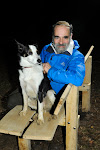Erev Succot
Monday, 13 October
One of the outstanding themes of Succot is gratitude. The Succah itself is traditionally understood by the Talmud, and this is echoed in the Shulchan Aruch, to represent the ananei hakavod, the clouds of glory which surrounded the dwellings of the Children of Israel in the wilderness and rendered them invulnerable to their enemies. But there is also no doubt that the Succah owes a significant part of its origin to the harvest and the booths which farmers would construct for shelter in order to spend this busy season of the year in their fields. Perhaps this, too, is the background to the ancient custom, described as early as the Mishnaic period, of decorating one’s Succah with produce from the passing months: ‘and hung in [the Succah] nuts, apricots, almonds, pomegranates, branches from the vine, crowns made of corn stalks, wines and vessels filled with fine flour…’ (Talmud: Shabbat 22a). Succot is the festival of faith and appreciation.
How important it is, then, to say thank you before the festival commences to everyone who has put so much hard work and good heart, devotion, learning, melody, fellow feeling, sensitivity, stamina, skill and generosity into creating the wonderful atmosphere which filled our community over the Yamim Nora’im, especially throughout Yom Kippur. Thank you for the commitment in coming forward to lead our services; thank you for the hard work and many patient hours of preparation; thank you for the beautiful singing; thank you for the endeavour to achieve heartfelt kavvanah; thank you for the sensitivity to the community in the way prayers were lead. And, as the song goes, thank you not just for the past, but also for the future. It’s never too early to be thinking about next year. But first, of course, comes the joy of Succot, zeman simchatenu; I hope we will be as strong a community in joy, over Hallel and Hakkafot, as we have been over fasting and confession.
Here are three brief thoughts about song (to be developed next year) to close this year’s blog.
God instructs Moses (Devarim 31:19) that he should teach the Children of Israel the song (recorded in Parashat Ha’azinu, known too as Moses’ Song) and that it should constitute an ed, an act of witness, between us and the divine. It seems puzzling that song should constitute testimony. Yet the depth, power and harmony of poetry and music are indeed one of the most profound sources of the holy and one of the most compelling means of transmitting its impact known to us.
In the Shirah, the Song at the Sea, we are told that God is both our strength and our music – ozzi vezimrat y’. In the contemporary world, song is certainly understood to be of aesthetic importance and widely felt to be of spiritual significance. But it is not generally related to strength. Power is considered to belong to a different discourse, of armies, weaponry, money, prestige. Yet that phrase from the Shirah, the song of the Torah par excellence, points to a deeper truth. Our strength lies precisely in our capacity for song; here is the source of our spiritual resistance, our joie de vivre, of our faith itself. Power, persecution, the inevitable passing over generations, - they cannot silence or obliterate song.
Lastly, one of the Hasidic derivations of our name, Yisrael, is ‘the one who sings of God’.
Thank you for helping us to sing that song. It is always ancient and always new, never different from how it has been, yet constantly in the process of transformation. Let’s look forward to its wonderful familiarity and its creative regeneration in the year ahead.
Monday, October 13, 2008
Subscribe to:
Post Comments (Atom)

No comments:
Post a Comment